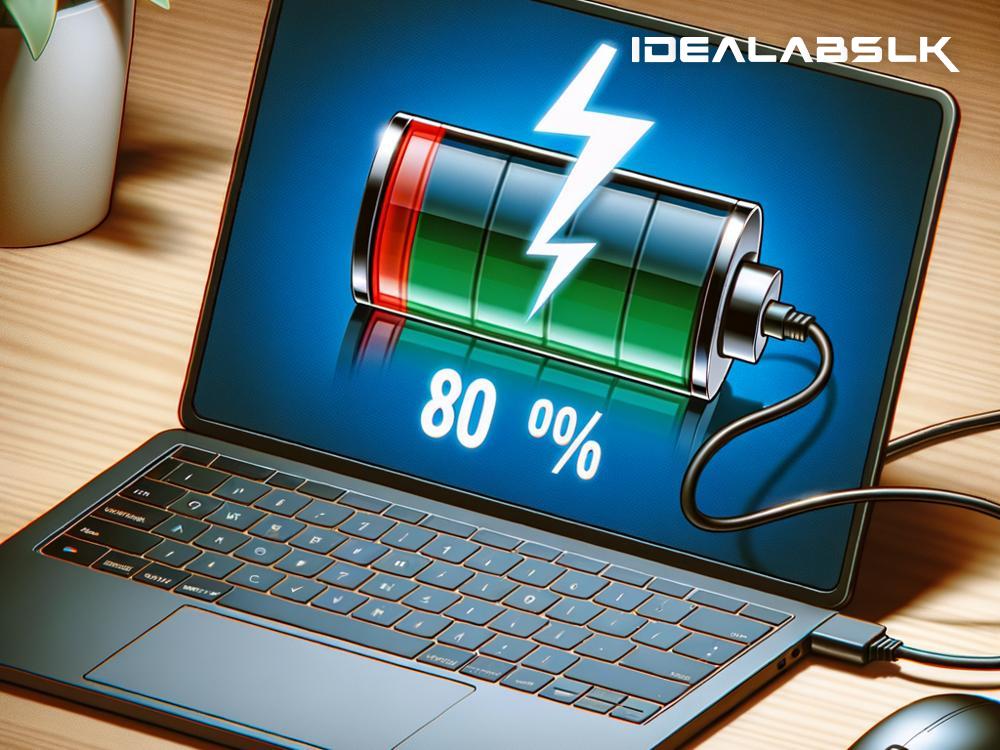How to Fix 'Laptop Battery Not Charging Above 80%'
Picture this: you’re preparing for an important day ahead, and you plug in your laptop to ensure it’s fully charged and ready to go. But, to your surprise, it just won’t charge above 80%. This unexpected hiccup can disrupt your workflow, but worry not! This article will guide you through simple steps to fix the issue of a laptop battery not charging above 80%.
Why does this happen?
First off, it’s crucial to understand why your laptop might stop charging after reaching 80%. Many modern laptops come with a built-in battery preservation feature. This feature aims to extend your battery's lifespan by preventing it from charging to full capacity. Continuously charging your laptop to 100% can wear down the battery over time, so this system is designed to mitigate that wear and tear.
Step 1: Check Your Battery Health
Before diving into solutions, it's wise to check your battery's overall health. On Windows, you can easily generate a battery report by searching for “CMD” in your start menu, right-clicking on “Command Prompt,” selecting “Run as administrator,” and then typing powercfg /batteryreport. This will create a file with detailed information about your battery's health.
If you're using a Mac, hold the Option key and click the Apple menu, then go to System Information > Power. Here, you'll find your battery's condition and cycle count. If your battery is in bad shape, consider getting it replaced.
Step 2: Adjusting Battery Settings
For Windows Laptop:
- Battery Saver Mode: If your laptop is stuck not charging above 80%, it could be because it’s in battery saver mode. You can turn this off in the system settings under Battery.
- Battery Health Management: Some laptops have a battery health management feature in their BIOS settings. Restarting your laptop and accessing the BIOS settings (usually by pressing F2, Delete, or F10 during startup) can help you find and disable such a feature.
For Mac Laptop: Navigate to System Preferences > Energy Saver (or Battery depending on your macOS version). Here, you can find settings related to battery health. On newer macOS versions, you might find an option called "Battery health management" which you can uncheck.
Step 3: Calibrate Your Battery
Calibration helps reset the battery's indicator to display accurate charge levels, which may solve the charging issue:
- For Windows Laptop: Fully charge your laptop, then let it drain completely until the laptop turns off by itself. After that, charge it back to 100% in one go.
- For Mac Laptop: Similar steps apply. Charge it to 100%, use it until it shuts down, and then charge it back to 100% again.
Step 4: Update Your Drivers and BIOS
Outdated drivers and BIOS can sometimes cause battery charging issues. To update drivers on a Windows laptop, go to Device Manager, find "Batteries," and update the drivers for anything listed under it. For updating BIOS, check your laptop manufacturer’s website for instructions unique to your model.
Mac users can check for updates by going to the Apple menu > About This Mac > Software Update.
Step 5: Check Your Power Adapter and Port
A faulty adapter or power port can also lead to charging issues. Inspect your adapter for any physical damage and try using a different cable or charger if possible. Ensure the power port on your laptop is clean and free from debris blocking the connection.
When to Seek Professional Help
If you've tried all the above steps and your laptop still won't charge above 80%, it may be time to seek professional help. There could be a more serious issue at hand, such as a faulty battery or internal hardware problems, which require expert attention.
Conclusion
A laptop not charging above 80% can be an alarming situation, but often, it’s a feature rather than a defect. By following the steps above, you can quickly troubleshoot and resolve most issues related to battery charging. Remember to regularly check your laptop’s battery health and keep its software updated to avoid facing similar issues in the future.
Whether you’re a student, professional, or just someone who relies heavily on their laptop, understanding how to maintain your device’s battery health will ensure it remains reliable when you need it most.

